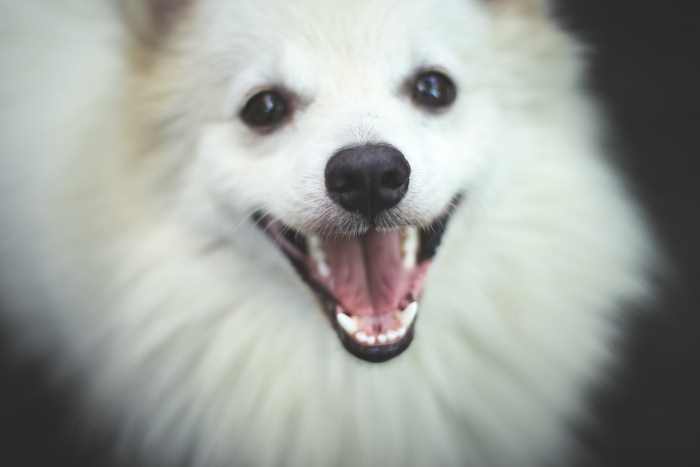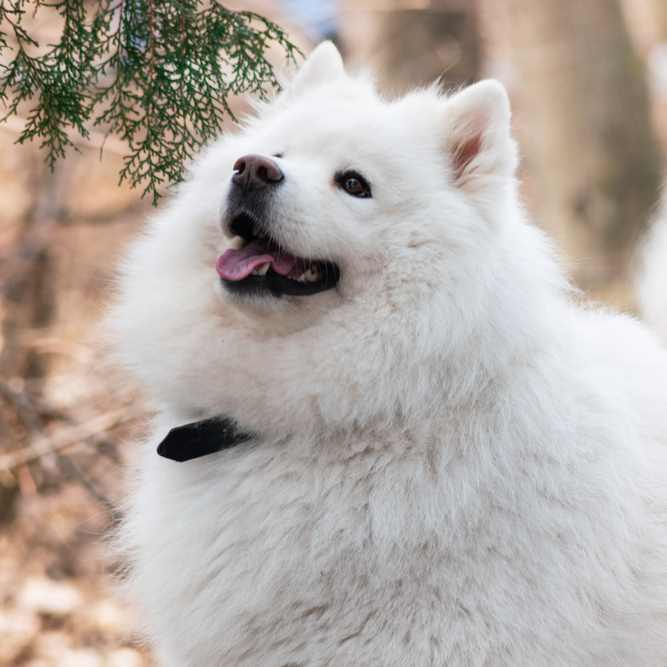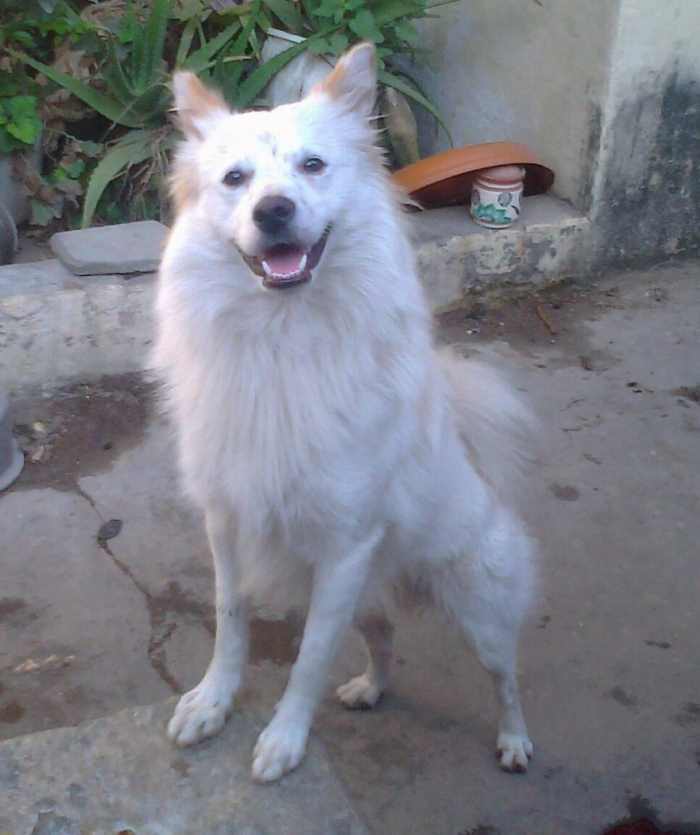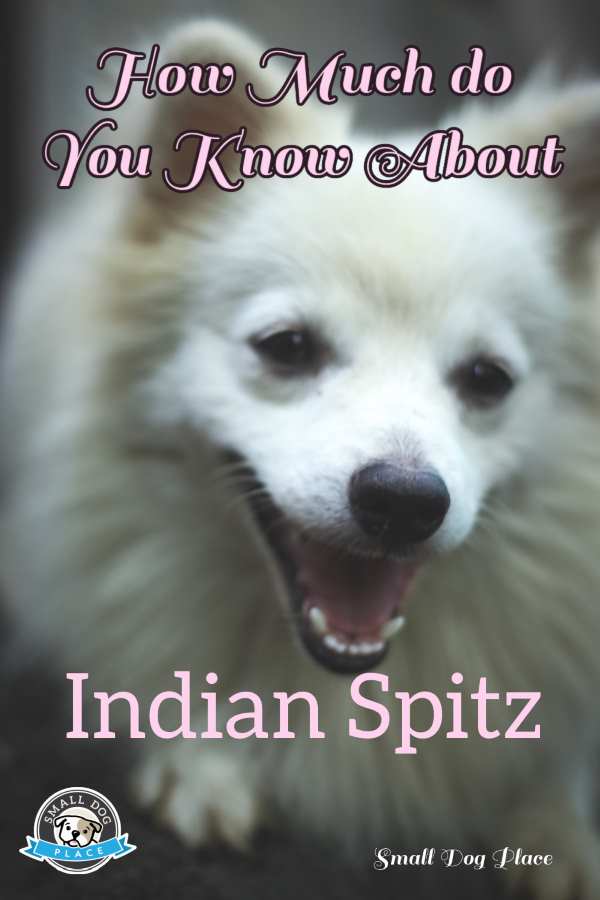- Small Dog Place Home
- A-Z Breeds A to M
- Indian Spitz
Indian Spitz
Intelligent, Energetic, Highly Trainable
By Sahir Farid |Published 02-01-2021
Available in two different sizes, the Indian Spitz looks like a Pomeranian, which is often called Indian Pomeranian. However, both of them are totally different breeds.
Interestingly, the Indian government banned international dog breeds from India in the 1980s and 1990s. As a result, Indian Spitz became a hot cake among breeders and dog lovers. Apart from the fact that Indian Spitz is a popular breed in India, none of the well-known international kennel clubs recognizes this breed.

This intelligent and energetic dog is one of the top 15 popular breeds in India, where other breeds are foreign. It comes in 2 versions; Bigger or Greater Indian Spitz and Smaller or Lesser Indian Spitz. Both share almost the same traits, and there is no significant difference between both versions other than size.
If you are looking for a dog that is always ready for an adventure while on the other side are the best family dogs, the Indian Spitz should be a first-class choice for you. Interestingly, it is one of the cheapest Indian dog breeds that you can even get for around $55 within India.
Given below are some quick facts about the breed.
Quick Facts
Other names used: Pomeranian, Indian Pomeranian, English Kutta (Kutta is for Dog in Hindi)
Affiliation: Dog Registry of America (DRA) and Indian National Kennel Club (INKC)
Group: Utility dog
Height: 14 - 18 in (35- 46 cm)
Weight: 11 – 44 lbs (5-20 kg)
Coat Type: Fluffy double-coat
Colors: White, black, and brown
Country of Origin: India
Activity Level: Average
Life Expectancy: 10-14 years
Good with Children: Yes (Training is a must)
Good with other pets: No, it is more a territorial dog
Litter size: 1 to 5 puppies
Price: 4000 to 8000 INR ($55-$110)
History

Almost all the Indian dog breeds are native to the Indian region but not the Indian Spitz. This fluffy dog is said to be a descendant of the German Spitz dogs brought to India by the British in the 19th century. Later they were mixed with the Indian Pariah dog. After several generations, breeders developed a dog that can tolerate India's sweltering weather.
In 1994, an Indian Spitz starred in one of the Indian film industry blockbuster movies, which had given more fame to this snow white-colored dog throughout India. The lead actress of the movie later adopted that Indian Spitz.
Personality of the Indian Spitz
 By Ash7shobinth - Own work, CC BY-SA 4.0, https://commons.wikimedia.org/w/index.php?curid=34191864
By Ash7shobinth - Own work, CC BY-SA 4.0, https://commons.wikimedia.org/w/index.php?curid=34191864Indian Spitz has a pleasant personality and cute looks that make it an ideal family dog. Although there is no authentic information about their intelligence, these small furballs are among the intelligent ones because they are highly trainable.
Along with that, they develop a strong emotional bond with their humans. Last but not least, their super-expressive eyes seem from some other planet.
Bringing a joyful dimension to your home, these dogs are great with kids. They may not be the strongest, but they are good at alerting you about strangers and possible predators when made in-charge.
Moreover, size does not matter to them if they feel threatened by a bigger dog. Due to their quick learning abilities, Indian Spitz was a significant part of Indian circuses between 1970 and 1980.
| Traits | Rating |
|---|---|
| Playfulness | |
| Affection Level | |
| Friendliness Towards Strangers | |
| Good with Children | |
| Good with Other Dogs | |
| Good for First Time Owners | |
| Exercise Needed | |
| Ease of Training | |
| Watch Dog Ability | |
| Grooming Requirements | |
| Shedding | |
| Cold Tolerant | |
| Heat Tolerant |
Dog Breed Ratings Got You a Little Confused?
Here's a little help in understanding them
- Playfulness: Most Playful = 5 Least Playful = 1
- Affection: Most Affectionate = 5 Least Affectionate = 1
- Friendliness Towards Strangers: Most Friendly = 5 Least = 1
- Good With Children: Great= 5 Not Good with Children = 1
- Good With Dogs: Great = 5 Not Good Around Dogs = 1
- Good With First Time Owners: Fine=5 Not Appropriate = 1
- Exercise Required: Extensive Daily Exercise = 1 Minimal = 1
- Ease of Training: Very Easy = 5 Difficult = 1
- Watch Dog: Excellent Watch Dog = 5 Minimal = 1
- Grooming: Time Consuming = 5 Minimal = 1
- Shedding: Heavy Shedder = 5 Minimal = 1
- Cold Tolerance: Well Tolerated = 5 Poor Tolerance = 1
- Heat Tolerance: Well Tolerated = 5 Poor Tolerance = 1
Grooming Requirements
Because of their European heritage, shedding may cause problems for pet parents in summer. They need to be brushed at least once or twice a week. Indian Spitz usually loves brushing, so the more, the merrier. It is advisable to look into the coat for ticks and fleas daily, especially in warm weather.
Unlike their furry appearance, these little dogs do not require intense grooming sessions.
Usually, bathing can dry out their fur quickly; hence you need to bathe them once after two weeks or a month. Rinse the soap carefully from the coat to avoid any residue and for a shiny, healthy coat.
Nail clipping is also a part of their grooming. Once you hear clicking sounds from your dog's nails, it is time to clip them. According to The Dogs Journal, just cut the nails' tip and not too short, or you may cut a blood vessel, which causes excessive bleeding. Grinding is another option, if you prefer not to clip.
Grooming helps maintain the dog's hair and creates a bond between you and your pup. So, it is recommended to make your dogs comfortable with grooming from an early age.
Health Concerns

These feisty dogs can live 10-14 years in a well-maintained, healthy environment. Since they are accustomed to the Indian climate, they are generally a disease-free breed.
The hot and humid climate does not affect their furry coat and health. Vaccination is a must when they are six weeks old. These dogs tend to live an active and healthy life besides a few health problems mentioned below.
- Uncontrolled food portions and improper nutrition can lead to obesity.
- They can have hip dysplasia and knee slip (Patellar Luxation), resulting in loss of balance.
- They can also suffer from separation anxiety when left alone, so it is better to train them to be alone from an early age.
- Lack of aqueous tears leading to dry eyes results in red, painful, and irritated eyes that can even lead to serious vision problems.
- Some other health problems which may arise occasionally are fleas, ticks, heartworm, and halitosis (bad breath).
All of these diseases and conditions can be avoided and/or treated if your dog has developed them, though. A visit to the vet every 3-6 months is recommended to prevent them from being sick. Also, make sure the pup is up to date on vaccinations against some common diseases such as parvovirus, rabies, canine hepatitis, distemper, etc.
Feeding
These Spitz pups need multiple meals a day. The rule of thumb is that small dogs require 80 calories for every 1 kg weight. Once your puppy passes his first birthday, one bowl a day is sufficient.
But you must always try to adapt to your puppy's eating habits, as some may eat two bowls a day. For adult Indian Spitz, many top quality dry dog foods provide balanced nutrition.
The Indian Spitz, chiefly, lives on homemade food, so you do not have to spend much on commercial dog food. Since these dogs thrive in the Indian lifestyle, they are used to homemade food, including milk and rice.
Some dogs may have a problem digesting milk, though. Indian Spitz can abide on cooked vegetables along with chicken and eggs.
Please provide them with clean and cold water in clean dishes daily. Adding raw meat from time to time is healthy for the puppy as the nutritional needs change with age and the type of feeds given.
Indian Spitz also loves cottage cheese, snacks, and treats. But make sure to keep all the snacks and treats less than 10% of daily nutrition.
Energy Level
The Indian Spitz is joyful and zestful, but their energy level depends on age and health factors. Typically, these little dogs have an average energy level, but Indian Spitz needs physical activities daily to fight boredom.
The requirement for physical activities increases with age. Although not being well suited for extreme workouts, they love to have a nice walk in the park with their owner. They are active and alert, may run off the leash, so make sure to bring some treats to keep them in a good mood.
Training
Indian Spitz is a clever dog breed having an unpredictable behavior. These little fur babies are easily trainable and adorable, hence genuinely versatile. They are the most intelligent breeds in India; therefore, they demand adequate training. The dogs need proper mental and physical training if the pet parents want an obedient pup.
Indian Spitz is also known as a 'trick dog' because of its past in the circuses and quick learning abilities.
Positive reinforcement training is a simple method to manage and train your dog's mental character. This is a powerful method to train your dog's behavior desirably.
Make sure to create a distraction-free area and time your rewards while training. Varying the training exercises is crucial as Indian Spitz hates monotony.
Pros of living with an Indian Spitz
- Easily trainable
- Good overall health
- Low drooling tendency
- Excellent adaptability with different lifestyles
- Friendly with children and elderly people
- Ideal for first-time owners
- Excellent watchdog
Cons of living with an Indian Spitz
- Separation anxiety
- High-shedding coat
Wrapping it up
So, it was Indian Spitz, the superstar Indian dog breed. It is a beautiful breed that can become an ideal family dog.
You shouldn't consider getting an Indian Spitz if you spend most of your time out of home because they are prone to separation anxiety. Along with that, make sure you raise your fur baby with full dedication and let it not be a spoiled dog.
Author Bio:
Sahir Farid is the owner of The Dogs Journal. This blog is dedicated to providing the best possible information about dogs, especially the Doodles. Sahir believes that every dog in this world has the right to live a lovely healthy life regardless of gender, color, and breed.
Similar Breeds to Investigate
About Janice (author and voice behind this site)
Having lived with dogs and cats most of her life, Janice served as a veterinary technician for ten years in Maryland and twelve years as a Shih Tzu dog breeder in Ohio.
Her education includes undergraduate degrees in Psychology with a minor in biology, Early Childhood Education, and Nursing, and a master's in Mental Health Counseling.
She is a lifelong learner, a dog lover, and passionate about the welfare of animals. Her favorite breed for over 50 years has been the Shih Tzu, but she has also lived with Poodles, Maltese, Yorkshire Terriers, Beagles, English Bulldogs, Carin Terriers, and a Cocker Spaniel.
When not writing, reading, and researching dog-related topics, she likes to spend time with her eight Shih Tzu dogs, husband, and family, as well as knitting and crocheting. She is also the voice behind Miracle Shih Tzu and Smart-Knit-Crocheting
Does This Article Deserve Your Thumbs Up?
We always appreciate your support and encouragement. Your thumbs up means so much to us. Please like this article.
If you find this page or any page on Small Dog Place Helpful, or useful in anyway, I'd love it if you would click the small heart found on the bottom right of each page.
You can also share or bookmark this page -- just click on the:

Free Monthly Newsletter
Sign Up for Our Free Newsletter and get our Free Gift to You.
my E-book, The Top 10 Mistakes People Make When Choosing a Dog (and how to avoid them)






